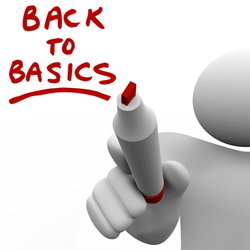A forced-air furnace or heat pump is a safe and efficient way to heat your Yuma area home. Understanding the basics of how your system works can help you troubleshoot problems with your heating system, as well as allow you to communicate effectively with your HVAC professional in the event service or an upgrade is needed.
A forced-air furnace has four main components (and most of them are the same for a heat pump):
Thermostat: The thermostat tells the heating equipment when to turn on and when to turn off. When the temperatu re of the air in your home dips below the thermostat setting, the equipment kicks on to warm the air. When the air has reached the temperature of the thermostat setting, the equipment turns off.
re of the air in your home dips below the thermostat setting, the equipment kicks on to warm the air. When the air has reached the temperature of the thermostat setting, the equipment turns off.
Air handler: When the furnace turns on, the air handler brings in cold air to the furnace through a series of return registers throughout the house. The air handler is located in the blower compartment between the cold-air return and the furnace itself. In a heat pump, the air handler is in the same indoor component as the evaporator coil, which releases heat from refrigerant brought in from outside.
Heat exchanger: The cold air is sent through the furnace’s heat exchanger, which heats the air utilizing a gas-fueled burner or an electric heating element.
Ductwork: The furnace or heat pump blower or air handler sends the warm air through the ductwork and into the rooms of your home.
Other components of a forced-air system include:
Air filter: The air filter is located in the blower or air handler compartment. It filters particles such as dust and pollen from the air in your home and prevents them from building up on the fan and heat exchanger in your furnace or the evaporator coil in your heat pump, which can cause expensive damage and make your system less efficient. It’s important to check your air filter each month and replace it when it’s dirty.
Supply registers: The supply registers in each room control the flow and direction of air to the room. Closing off more than 20 percent of registers to save on heating costs can cause your equipment to overheat.
Exhaust vent: In combustion furnaces, the exhaust that results from the combustion process are vented outside.
For more information about how your forced-air furnace or heat pump system works in your home, please contact us at Hansberger Refrigeration & Electric Company, serving the Yuma area with excellent service since 1952.
Our goal is to help educate our customers in Yuma, Arizona about energy and home comfort issues (specific to HVAC systems). For more information about forced-air furnaces and other HVAC topics, download our free Home Comfort Resource guide.
Image courtesy of Shutterstock

